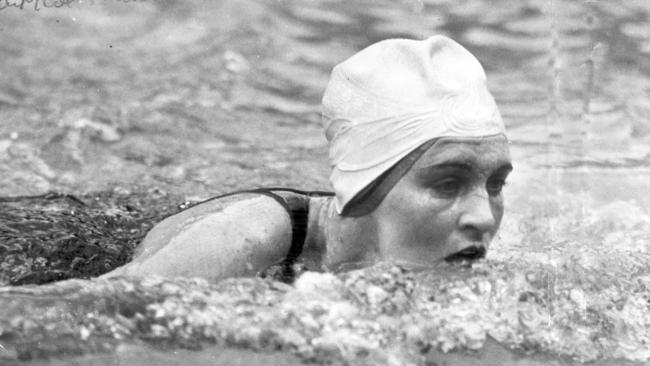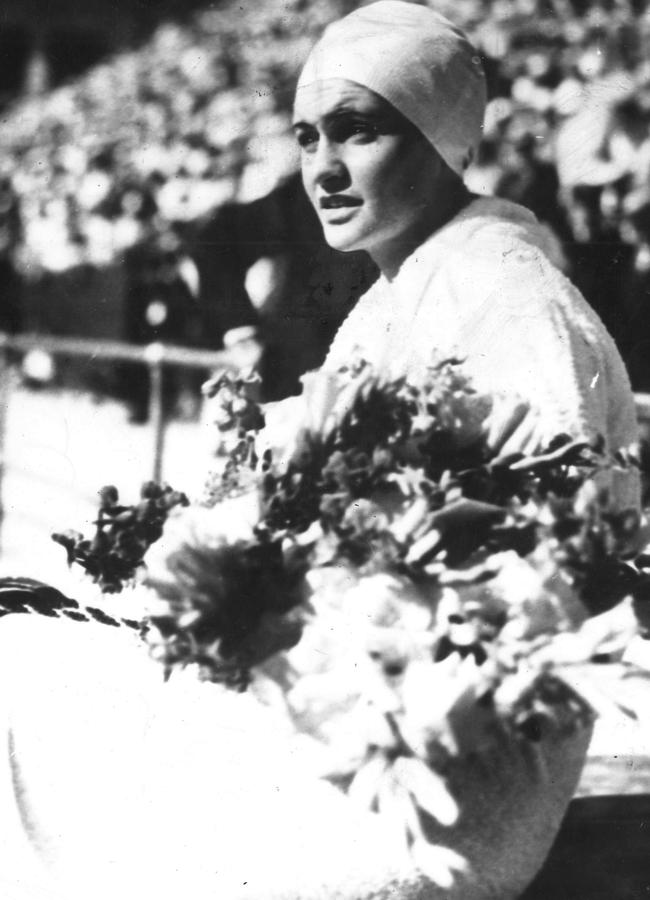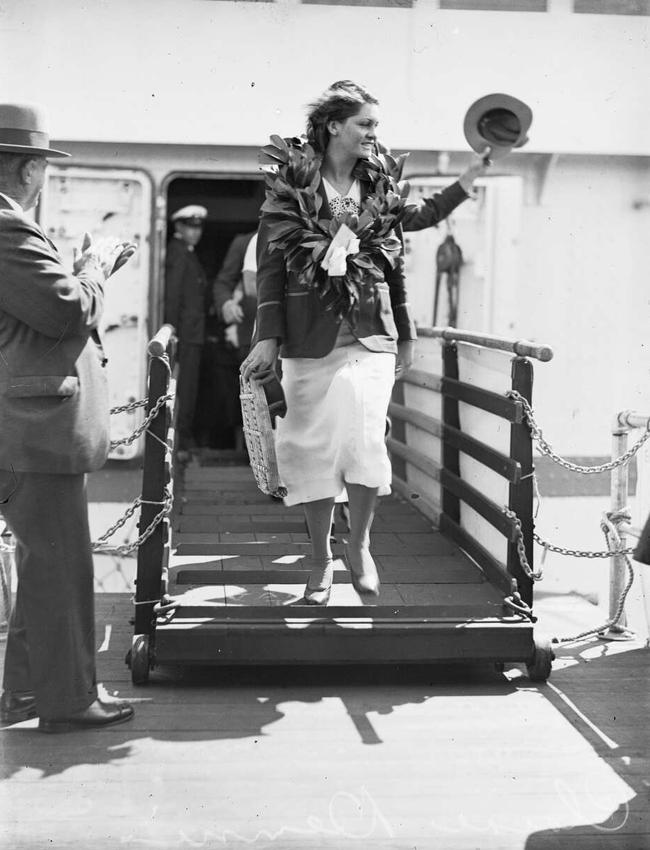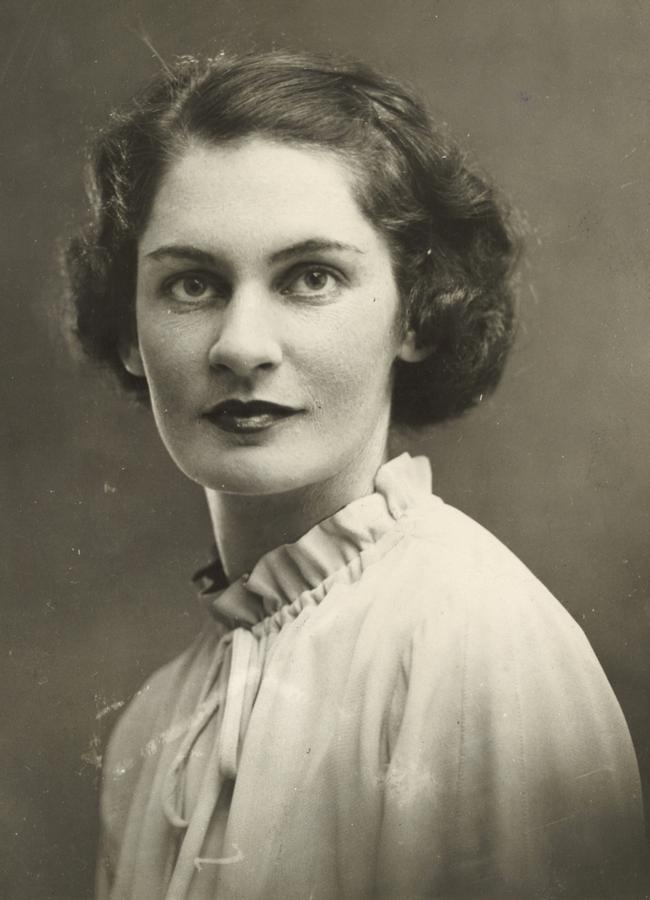Breaststroke champ Clare Dennis won gold at 1932 Los Angeles Olympics despite protests over her costume
WHEN people protested that Clare Dennis was showing too much shoulder blade at the 1932 Los Angeles Olympics it didn’t faze her. She went on to win gold in the 200m breaststroke.

Today in History
Don't miss out on the headlines from Today in History. Followed categories will be added to My News.
WHEN Sydney teenager Clare Dennis lined up on the blocks for the heats of the 220 yards breaststroke at the
1932 Los Angeles Olympics, someone was paying way too much attention to her costume.
Made by Australian manufacturer Speedo, the wool and silk costume was very low cut at the back, but it conformed to all standards set out in the Olympic rules. However, that didn’t stop someone lodging a protest as Dennis made her way to the final. They complained that she bared too much of her shoulder blades.
Fortunately the protest was quickly dismissed and, 86 years ago today, on August 9, 1932, the 16-year-old Dennis went on to win the gold.
It made her a hero back home in Australia, where she was cheered by huge crowds when she returned aboard the ship Mariposa in September.
It would be her only Olympic gold medal. Despite setting world records and winning gold at the 1934 British Empire Games in London, bound for the 1936 Olympic Games in Berlin she controversially withdrew from the team and retired from the sport because of a recurring foot problem.

Few people now know her name, but her LA performance cemented her place in Australian Olympic history. She was the youngest competitor to win gold at the 1932 games and Australia’s youngest gold medallist until Shane Gould in 1972.
Born Clara Dennis on March 7, 1916, in Burwood, she was the daughter of police constable Alexander Dennis and wife Susan. Alexander worked at the Sydney Police Court and, in 1918, he was promoted to police prosecutor, later moving his family to Clovelly. Clara, who preferred to be called Clare, became a keen swimmer after her father first tossed her into Clovelly Baths when she was six. She dog paddled to the end of the pool and a passion was born.
At the age of seven she swam across Clovelly Bay to prove to her father that she was ready to follow her older sister Thora into membership of the Sydney Ladies’ Swimming Club. Thora was a junior champion and won selection to the Australian Olympic team in 1928, which spurred Clare to become a junior champion as well, setting school and state records in 1929. Clare would have won the state championship in the 220 yards breaststroke but was disqualified for swimming outside of her unmarked lane. Although it was found not to be her fault, the disqualification stood.

Clare quit school at 14 to concentrate on her swimming. In early March 1930 she made the news when she helped to save a fisherman who was washed from the rocks at Clovelly. On March 16 at Bondi, after finishing first in the state championships and breaking a state record, she was disqualified again for not touching the end of the pool with both hands.
At Drummoyne Baths during an Empire Games gala swim later that month, she set a state record for the breaststroke. Unfortunately, she also scratched her heel and developed blood poisoning. She recovered to show good form in her competitions for the rest of the year and, in January 1931, won the national championship for the 220 yards, with an Australian record time of 3min 24 sec.
The death of her father in September 1931 cast a shadow on what was otherwise a bright year. She ended the year by setting a record in the national 100 yards breaststroke.
In January 1932 she broke the 220 yards world breaststroke record and was chosen for the Australian Olympic team. A collection was taken up among her late father’s colleagues to make sure she could go.

After winning her heat in Los Angeles, American gold medallist and soon to be film star Buster Crabbe told her to swim three strokes underwater after diving in and make sure she was first to touch the wall in the turn. She took his advice and won gold.
While in LA she also struck up a romance with athlete and former police officer George Golding. After returning home an Olympic hero she continued with her swimming, resisting offers to turn professional, and accepted work in the swimwear section of Mark Foy’s department store (which led to accusations that she had turned professional for endorsing their products). In 1933 she beat her own record and in 1934 won gold at the Empire Games in London.
In 1935 she and Golding were engaged. After being forced to withdraw from the 1936 Games, Dennis found work as a professional swimming coach but later worked as a masseuse and ran a hairdressing salon.
She married Golding in 1942. They had no children and Dennis died of cancer in 1971.

